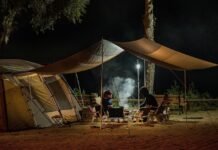June 6, 1944. Allied countries pulled together to pull off one of the greatest military moves in the history of men.
It was the beginning of the end for Hitler and his era of terror. It was the turning point in WWIIt hat finally lead to it’s end over a year later. It was the beginning of the liberation of France.
5,000 ships. 11,000 airplanes. 150,000 men. One beach, Normandy Beach, divided into 5 key points.No one had seen anything like it before. No one has since. It took years to plan for Operation Overlord. Months of training. Agreement, and arguments, among Allied leaders. And some help from Mother Nature. Not to mention some arrogance on the part of Hitler’s Germany.
Most of the 150,000 troops were barely over the age of 20. They disembarked from boats under heavy fire with 80 lb. packs strapped to them. If they survived the water and made it to the beach, there was another 200 yards before any kind of cover was found. Artillery and machine gun fire raining hell upon them.
By day’s end, over 10,000 casualties on Omaha Beach, another 4,000+ dead. And yet, as General Eisenhower predicted, the troops courage, devotion to duty and skill in battle had conquered Fort Europe high atop it’s cliffs.
You are about to embark on the great crusade toward which we have striven these many months. The eyes of the world are upon you… I have full confidence in your courage, devotion to duty and skill in battle. – Gen. Dwight D. Eisenhower
D-Day Facts:
- The terms D-Day and H-Hour are used for the day and hour on which a combat attack or operation is to be initiated. They designate day and hour for an operation when the actual day and hour have not yet been determined or announced. The letters are derived from the words for which they stand, “D” for the day of the invasion and “H” for the hour the operation actually begins.
- Several hours prior to troops landing on the beaches, over 13,000 elite paratroopers of the American 82nd and 101st Airborne Divisions, as well as several thousand from the British 6th Airborne Division were dropped at night by over 1,200 aircraft.
- Almost 4,000 more paratroopers would later be brought in by gliders, known as Waco Gliders, during daylight hours
- The largest naval bombardment ever seen at the time was to begin at 5:50 A.M. on D-Day. Though the navy wanted the bombardment to last for two hours, the army’s desire to limit the amount of time the Germans had to reinforce the beach positions restricted the bombardment to forty minutes
- The battleships USS Arkansas, USS Nevada, a resurrected veteran of Pearl Harbor, and USS Texas each used fourteen inch guns that could launch explosive projectiles the size of small cars accurately to a range of fourteen miles. Add to that cruisers and 20 destroyers and the havoc wreaked , no matter the short time, was tremendous.
- The British Navy neutralized the highly touted German coastal guns. The pillboxes were a different story.However, fleet destroyers, despite no orders given, were the heroes as they moved into enemy fire to support troops as they landed with constant support bombardment.
- There were a total of 5 named beaches that had to be taken. The U.S. was responsible for Omaha and Utah beaches. The British and Canadians for Gold, Juno and Sword.
- Because of strong currents, American troops missed Utah Beach by 2,000-3,000 yards. Making their taking of the beach even tougher.
- By noon Omaha Beach had been dug in and taken by U.S. troops despite heavy casualties.
- By late that day, Allied forces were basically in control of the beach. Hitler’s arrogance had led to bad decisions, giving the Allied troops a decided advantage. The following weeks and months proved that, despite the losses, the right decision had been made, as Allied forces began there march towards Germany.
Hear the radio broadcast that day-





